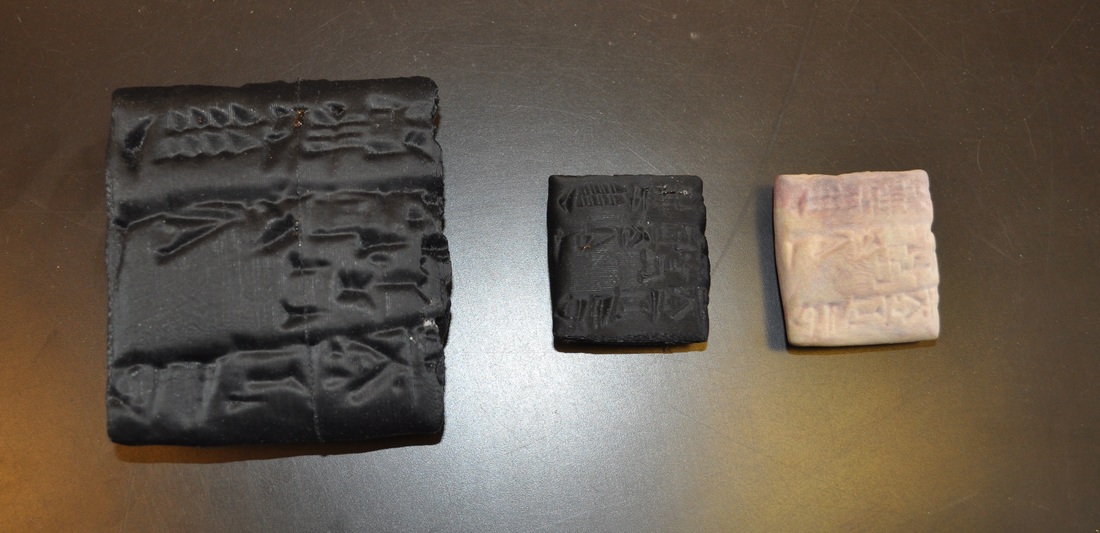|
This project started as a collaboration between Professors Hod Lipson and David I. Owen. Owen, the Bernard and Jane Schapiro Professor of Ancient Near Eastern and Judaic Studies, is the curator of Cornell's collection of nearly 10,000 cuneiform tablets from ancient Mesopotamia. Read more about Cornell's tablet collection at Cornell University's Cuneiform Library. Owen and Lipson had the idea of implementing 3D scanning and 3D printing technology to create physical replicas of the tablets that look and feel almost exactly like the originals.
|
|
A desktop 3D scanner or a CT Scanner was used to take 3D scans of the tablets. After scanning, the accompanying software, ScanStudio HD was used for post-processing and outputting 3D printable files of the tablets. With the VRML file format, prototypes were made (using ZCorp-type powder-based ink-jet printers) that match the look of the original tablets in color and texture. The software also has the ability to output the files in STL format for creating prints using other printing technologies (FDM, SLA, etc.) that do not retain color and texture matching. The video shows CT Scan of three cuneiforms, including the internal cross-sections of the clay. Note how the conical spiraling suggests that the conical cuneiform was made by rolling.
|
Download STL file (for monochrome printing)
|
Project participants |
Natasha Gangjee, Evan Malone, Hod Lipson, David I. Owen
|
Related Publications |
Knapp M., Wolff R., Lipson H. (2008), "Developing printable content: A repository for printable teaching models", Proceedings of the 19th Annual Solid Freeform Fabrication Symposium, Austin TX, Aug 2008.
|




